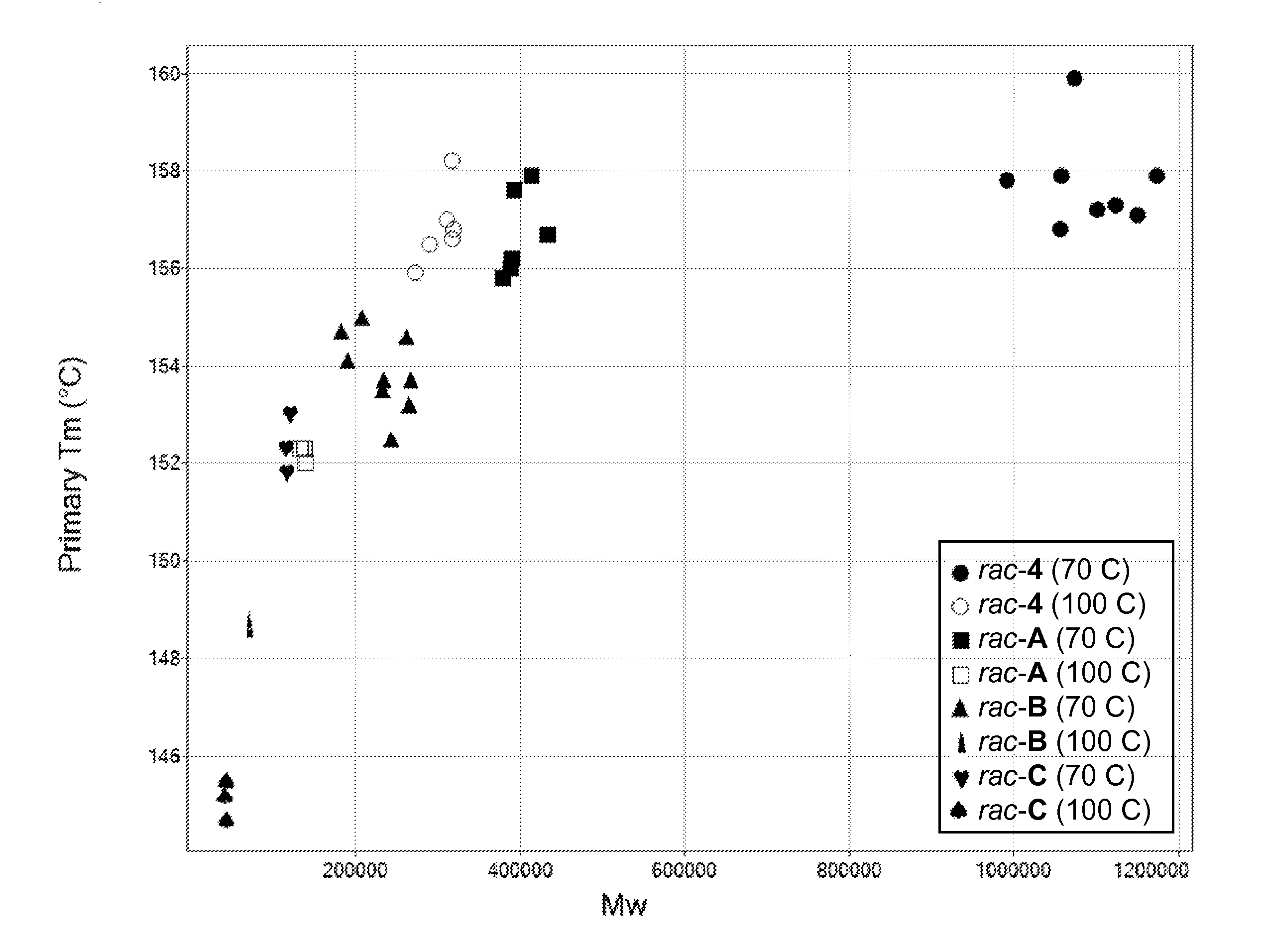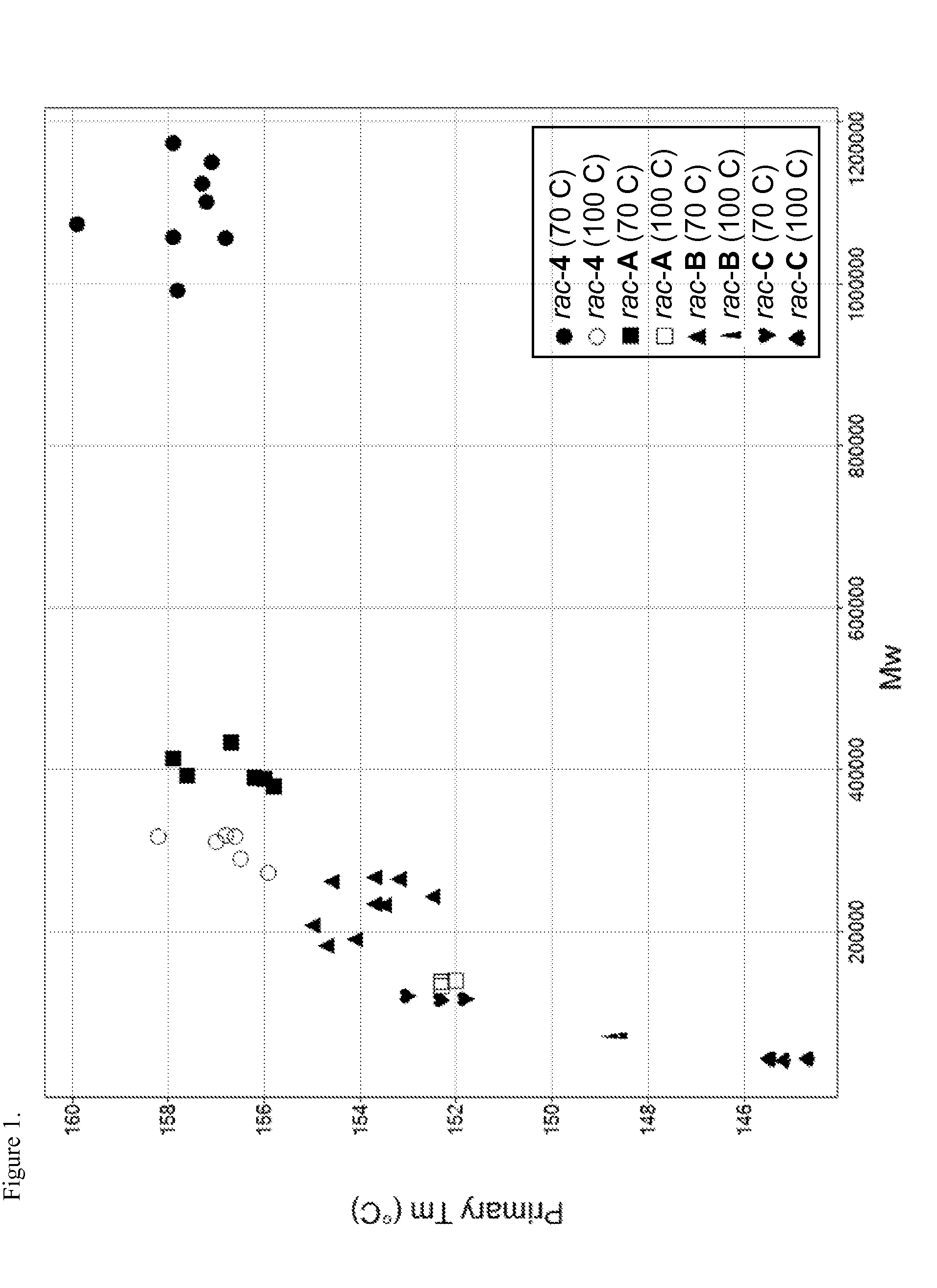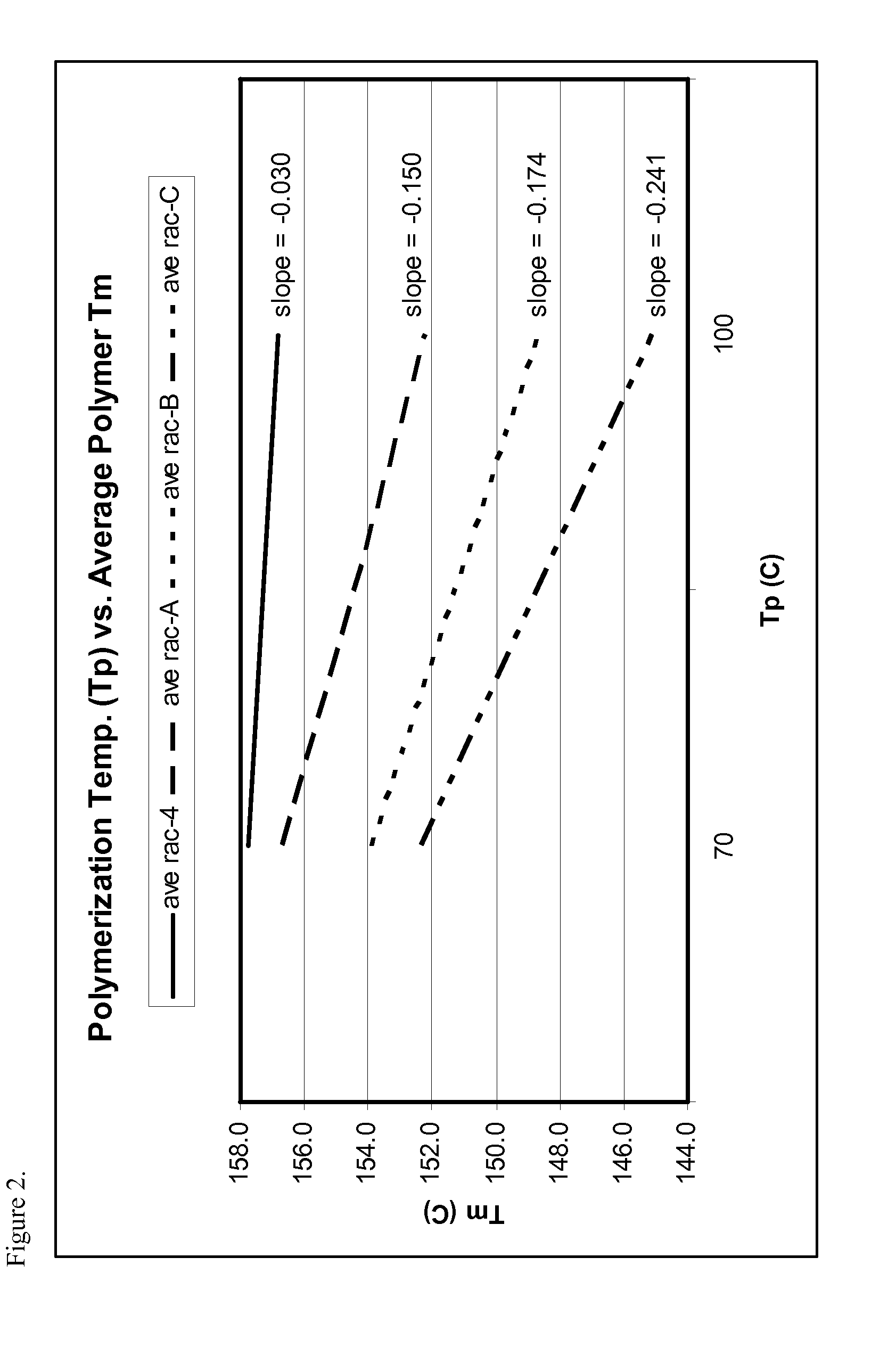Production of Propylene-Based Polymers
a technology of propylene and polymer, which is applied in the direction of catalyst activation/preparation, chemical/physical processes, and chemical production of bulk chemicals, etc., can solve the problems of poor end-use properties, low production efficiency, and inability to accurately correlate specific substitution patterns with specific polymer attributes
- Summary
- Abstract
- Description
- Claims
- Application Information
AI Technical Summary
Benefits of technology
Problems solved by technology
Method used
Image
Examples
examples hpp-6
to HPP-10 and Comparative Examples HPP-C3 to HPP-C6
[0172]A 37 cc stainless steel autoclave reactor equipped with a magnetic stir bar was heated to 120° C. for one hour under a stream of dry nitrogen in order to dry the reactor. The reactor was cooled and subsequently charged with hexane (20 mL, 13.18 g, 152.8 mmol) and tri-n-octyl aluminum (0.055 mmol; added in a 2.9 mL solution of hexane) as a scavenger. The total amount of tri-n-octyl aluminum utilized was adjusted to achieve a targeted Al:Zr molar ratio not greater than 350:1, respectively. The reactor was purged with propylene gas (purity>99%, Airgas Corporation) and then sealed to maintain an atmosphere of propylene. The reactor was then heated to 105° C., at which time more liquid propylene was added (16.0 mL; 8.176 g) via syringe pump to bring the pressure up to ˜600 psi (4.1 MPa) and the contents were stirred. Separately in a nitrogen-purged dry box, two separate stock solutions were prepared of the transition metal compound...
examples hpp-1
to HPP-10 and Comparative Examples HPP-C1 to HPP-C6
Differential Scanning Calorimetry (DSC)
[0173]Thermal transitions were measured on heating and cooling the sample from the solid state and melt respectively using Differential Scanning Calorimetry (DSC). For crystallization temperature (Tc) and melting temperature (Tm), the measurements were conducted using a TA Instrument MDSC 2920 or Q1000 Tzero-DSC and data analyzed using the standard analysis software by the vendor. 3 to 10 mg of polymer was encapsulated in an aluminum pan and loaded into the instrument at room temperature. The sample was heated to 210° C., cooled to −70° C., then heated to 210° C. all at a rate of 10° C. / min. Each sample was held at 210° C. for 5 minutes to establish a common thermal history. Crystallization behavior was evaluated by cooling the sample from the melt to sub-ambient temperature at a cooling rate of 10° C. / min. The sample was held at the low temperature for 10 minutes to fully equilibrate in the so...
PUM
| Property | Measurement | Unit |
|---|---|---|
| temperature | aaaaa | aaaaa |
| melting point | aaaaa | aaaaa |
| temperature | aaaaa | aaaaa |
Abstract
Description
Claims
Application Information
 Login to View More
Login to View More - R&D
- Intellectual Property
- Life Sciences
- Materials
- Tech Scout
- Unparalleled Data Quality
- Higher Quality Content
- 60% Fewer Hallucinations
Browse by: Latest US Patents, China's latest patents, Technical Efficacy Thesaurus, Application Domain, Technology Topic, Popular Technical Reports.
© 2025 PatSnap. All rights reserved.Legal|Privacy policy|Modern Slavery Act Transparency Statement|Sitemap|About US| Contact US: help@patsnap.com



